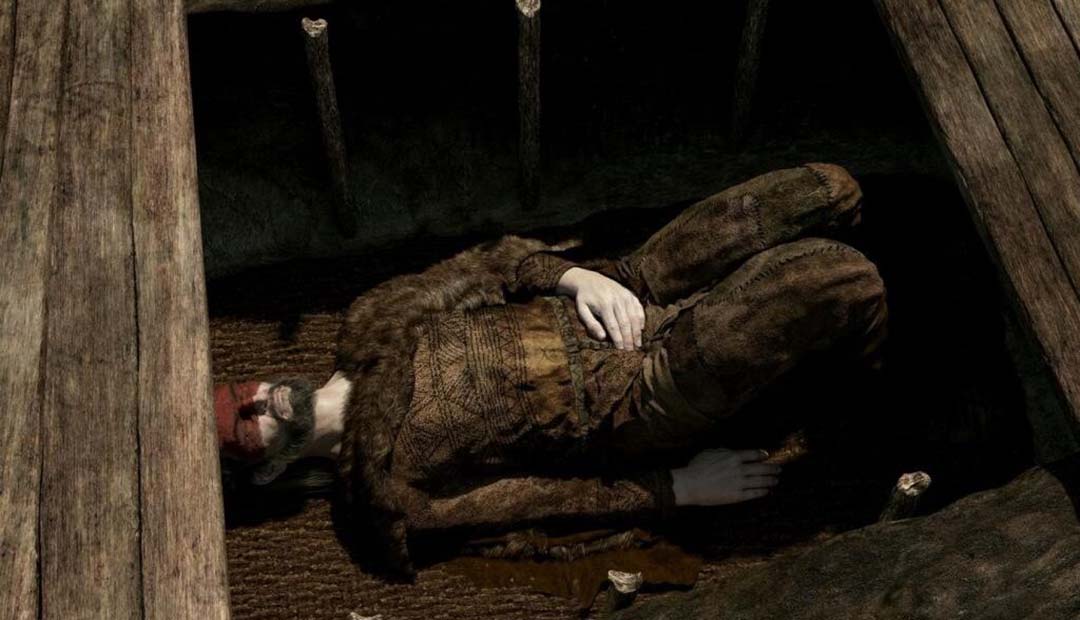5,000-Year-Old Yamnaya Burial Mounds Unearthed in Serbia
Researchers, including Polish archaeologists, discovered tall men’s bones covered with red dye in two burial mounds in Vojvodina (northern Serbia). These bones probably belonged to people who had come there almost five thousand years ago from the steppes of today’s South Russia or Ukraine.

The research targets were two large mounds with a diameter of 40 m and a height of 3-4 m located in the region Šajkaška (in the autonomous district of Vojvodina) on the lower Tisa, at the western edge of the Eurasian steppe. Each mound contained two spacious, wooden tomb chambers.
Both mounds were built in two stages. Initially, when the first deceased was buried approx. 3-2.9 thousand years BCE, they were much smaller. After some 100-200 years, during the second burial, their diameters and heights were significantly increased.

The graves we discovered were not spectacularly equipped, but we noticed the red colouring of some bones. This was due to the use of ochre on the bodies of the dead, says Dr Piotr Włodarczak from the Institute of Archaeology and Ethnology of the Polish Academy of Sciences, one of the supervisors of excavations. According to the expert, during that period it was a ‘sacred colour’ used during funeral rituals. The remains belonged to a tall man, over 1.8 m.
‘Both the use of ochre and above-average height of the deceased (men living in this part of Europe at the turn of the fourth and third millennium BCE were usually approx. 1.6 m tall) indicate that they were newcomers.
The ritual involving the use of ochre and burial in large mounds is associated with communities living in Eastern European steppes’, the scientist explains.
The researchers managed to dot the ‘i”. Genetic analysis of the remains shows that the deceased either came from the East themselves or were the immediate descendants of the newcomers. Samples for isotopic analyses were also taken from the bone to determine the diet, among other things.

‘It was not a surprise that their diet contained a lot of meat because these communities were animal breeders’, adds Dr. Włodarczak.
Excavations took place in 2016-2018, but only now have scientists concluded a series of expert analyses. The project was financed by the Polish National Science Centre. It was carried out in cooperation with the Museum of Vojvodina in Novi Sad.
According to Dr. Włodarczak, at the turn of the IV and III millennium BCE, Europe saw an influx of nomads from the southern steppes of today’s Russia and Ukraine, whose traces of archaeologists describe as the Yamnaya culture (from Russian, Pit Grave culture). It significantly changed Europe’s cultural situation.
‘The Bronze Age proto-state centres and elites began to emerge, as evidenced by huge mounds, under which individual people were buried’, he adds. Archaeologists believe they were community leaders.
Some of the graves were very richly equipped with weapons, ornaments and decorated dishes. The mounds discovered in Vojvodina are the westernmost tombs of the nomadic community of Yamnaya culture.
The new population also reached the areas of contemporary Poland. Archaeologists recorded a cultural change in the third millennium BCE – funeral rituals and methods of making ceramic vessels changed.
Based on evidence in the form of genetic analyses, researchers believe that the community referred to as the Corded Ware culture also consisted of descendants of steppe nomads.




